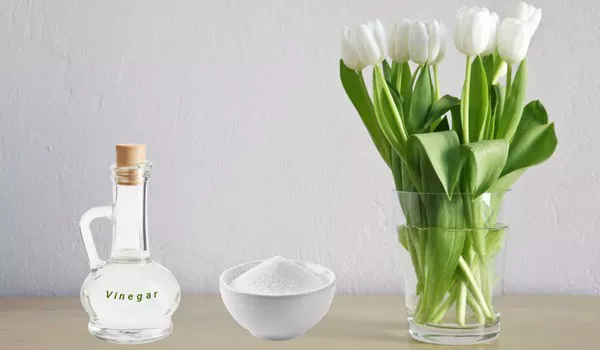Flowers have graced our homes and events for centuries, bringing color, fragrance, and a touch of nature’s beauty into our lives. Their delicate and vibrant petals make them a cherished gift and a centerpiece of celebrations. But, as a flower enthusiast, you might have wondered whether you can put flowers in the fridge to extend their freshness.
Understanding the Science of Fresh Flowers
To understand whether you can put flowers in the fridge, it’s essential to grasp the science behind flower freshness. Flowers continue to respire even after being cut, a process that involves taking in oxygen and releasing carbon dioxide. Refrigeration slows down this respiration process by reducing the rate at which flowers absorb oxygen, extending their lifespan.
Temperature and Humidity Considerations
Refrigerators are designed to maintain low temperatures and control humidity, which can have a significant impact on the freshness of flowers. However, not all flowers react the same way to refrigeration, and understanding these differences is crucial.
Types of Flowers That Benefit from Refrigeration
Cut Roses: Roses are known for their timeless beauty, and refrigeration can help them maintain their freshness. Store them in the crisper drawer with a paper towel to absorb excess moisture.
Tulips: Refrigerating tulips can extend their life by several days. Wrap them in paper and keep them away from fruits and vegetables, as the ethylene gas they produce can harm the tulips.
Lilies: Lilies, especially Asiatic and Oriental varieties, can be refrigerated to prevent premature opening of their buds.
Daffodils: Daffodils can benefit from being refrigerated before arranging them. Place them in a vase with cold water.
Lilacs: Lilacs are known for their fragrant blooms, which can be preserved longer by refrigeration.
Alstroemeria: Refrigeration can help Alstroemeria, also known as Peruvian lilies, last longer. Store them in a container with water to keep them fresh.
Chrysanthemums: Chrysanthemums can be refrigerated in a vase with water and benefit from the cold temperature.
Hydrangeas: These blooms appreciate cold storage to keep their colors vibrant. Place them in a vase with water.
Carnations: Refrigeration can extend the life of carnations, provided you keep them in water.
Delphiniums: Delphiniums are sensitive to heat, and refrigeration helps preserve their freshness.
It’s important to note that not all flowers should be refrigerated. Flowers like orchids, sunflowers, and gerbera daisies, among others, should be kept at room temperature. Refrigerating these flowers can harm them and reduce their vase life.
Pros of Refrigerating Flowers
Extended Freshness: Refrigeration slows down the respiration process, helping the flowers stay fresh for a longer period. This is especially beneficial if you need to store flowers for an event or a special occasion.
Prevent Ethylene Exposure: Refrigeration can protect your flowers from ethylene gas, which is emitted by fruits and vegetables and can accelerate the aging of flowers.
Reduce Bacteria Growth: The cold environment of the refrigerator can inhibit bacterial growth in the vase water, promoting flower health.
Enhanced Vibrancy: Some flowers’ colors remain more vibrant when stored in a cool environment, and refrigeration can help preserve their visual appeal.
Cons of Refrigerating Flowers
Frost Damage: Extreme cold can harm delicate petals, causing them to become discolored or wilt. It’s important to maintain the right temperature and not freeze the flowers.
Moisture Issues: Condensation can form on the flowers, and excess moisture can lead to mold or bacterial growth if not managed properly.
Loss of Fragrance: Refrigeration can reduce the fragrance of some flowers, particularly those known for their scent, such as lilies and gardenias.
Limited Space: Refrigerators may not have enough space to store large arrangements, and you might need to make adjustments to accommodate the flowers.
Best Practices for Refrigerating Flowers
If you’ve determined that your particular bouquet will benefit from refrigeration, here are some best practices to ensure the flowers remain fresh and beautiful:
Preparation: As soon as you receive the flowers, trim the stems at an angle and remove any foliage that will be below the waterline to prevent bacterial growth.
Clean Vase: Use a clean vase or container for storing the flowers, and fill it with fresh, cool water.
Paper Wrap: Wrap the flowers in a damp paper towel or a damp cloth, which can help maintain moisture without direct contact with the flowers.
Storage Location: Place the wrapped flowers in the refrigerator’s crisper drawer, away from fruits and vegetables that emit ethylene gas. This keeps the flowers away from potential harm.
Temperature: Maintain a temperature between 33°F to 35°F (0.5°C to 1.5°C) for optimal freshness. Avoid freezing temperatures.
Monitoring: Regularly check the flowers for any signs of condensation or excess moisture. Remove and discard any wilted or damaged flowers.
Rehydrate: If the flowers seem a bit dehydrated when you’re ready to arrange them, re-cut the stems and place them in fresh, cool water for a few hours before arranging.
Avoid Scented Foods: Keep strongly scented foods away from the fridge to prevent the flowers from absorbing odors.
Conclusion
The question of whether you can put flowers in the fridge has a nuanced answer. While refrigeration can significantly extend the freshness of specific flowers, it’s essential to understand the type of flowers you have and the best practices for refrigerating them. Whether they are roses, tulips, lilies, or other blooms, careful refrigeration can help you preserve the delicate charm of your cherished flowers.


